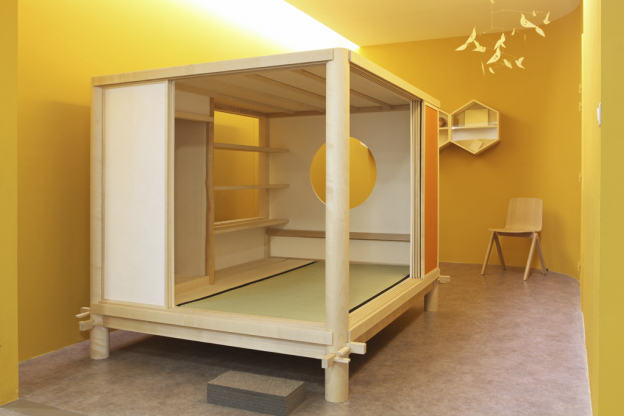Euville
The Euville quarries on the edge of Meuse are an emblematic part of Lorraine. The exploitation of limestone until the beginning of the 20th century left many traces: vestiges of industrial exploitation, buildings and tools from different eras, remains of the old quarrymen’s village.
Owned by the Pays de Commercy (group of communes), the site is in the process of becoming a major tourist attraction site. The patrons wanted the creation of an enduring work that could encourage reflection on the quarry landscape’s transformations.
Avoiding an over-documentary restitution of places and traces of life, Susanne Bürner prefers to underline the mysterious aspects and the fictional potential. Her proposal takes shape over three media: a book, a film and photographs.
The book, Euville tackles the human side of quarry history. The first section presents photographs taken by the artist inside old extraction galleries, followed by texts by Pierre Briot and Jean-Paul Streiff retracing daily life in a quarry. It includes images of graffiti drawn by workers on the walls of the galleries, accompanied by short stories collected by Susanne Bürner.
The film Pierre et Poussière (Stone and Dust) dwells on the imaginary dimension of the place – we follow two teenage girls who explore landscapes structured by previous activities, but also sites that are on the verge of disappearing: the café, the old washhouse….
The Cavaliers (The Cavaliers) photographic prints show the evolution of the landscape since the cessation of activity and the extent of vegetation. Two images in black and white punctuate a series that through its presentation suggests the story of a ramble. The eye discovers, over points of view, clues, reminiscent in small touches, of the industrial past. However doubts may persist about the origin of the landscapes.
Pierre et Poussière
Les Cavaliers
Euville
Captures éditions, en partenariat avec le Vent des forêts—espace rural d’art contemporain et l’office de tourisme du Pays de Commercy
commanditaires : Office de tourisme et Communauté de communes du Pays de Commercy
soutien : Parc naturel régional de Lorraine dans le cadre du programme européen LEADER (Fonds européen agricole pour le Développement rural), Fondation de France, DRAC Lorraine, Région Lorraine, Département de la Meuse
2012
crédits photo/vidéo Susanne Bürner, Phoebé Meyer











